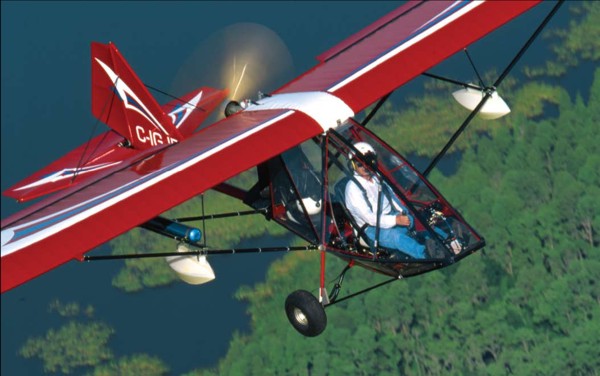
The Beaver and Chinook ultralight-like aircraft are arguably two of the bestknown lightweight designs coming from Canada. Aircraft Sales and Parts, more commonly known as ASAP, is the company that rescued and now manufactures and sells these designs, along with a powered parachute from its sister company, Summit Powered Parachutes. The tale of ASAP’s involvement with the Chinook and Beaver offers insight into ultralight progress – Canadian style. A History Lesson Perhaps the most famous ultralight to come out of Canada is the Beaver. With a reported 2,200 flying units since the early 1980s, it’s a successful design. However, due to corporate missteps by the companies that owned the brand, the Beaver series was nearly lost. Originally, the Beaver models were manufactured by Spectrum Aircraft Inc. Reorganization left the ultralight in the hands of a company called Beaver RX Enterprises. In 1993, that company closed its doors and stranded thousands of Beaver aircraft owners, along with all the dealerships that sold and serviced them.


 The Beaver and Chinook ultralight-like aircraft are arguably two of the bestknown
lightweight designs coming from Canada. Aircraft Sales and Parts, more
commonly known as ASAP, is the company that rescued and now manufactures
and sells these designs, along with a powered parachute from its sister company,
Summit Powered Parachutes. The tale of ASAP's involvement with the Chinook
and Beaver offers insight into ultralight progress - Canadian style.
The Beaver and Chinook ultralight-like aircraft are arguably two of the bestknown
lightweight designs coming from Canada. Aircraft Sales and Parts, more
commonly known as ASAP, is the company that rescued and now manufactures
and sells these designs, along with a powered parachute from its sister company,
Summit Powered Parachutes. The tale of ASAP's involvement with the Chinook
and Beaver offers insight into ultralight progress - Canadian style.
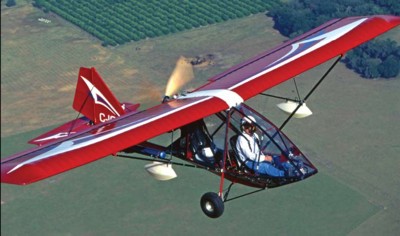 Perhaps the most famous ultralight
to come out of Canada is the Beaver.
With a reported 2,200 flying units
since the early 1980s, it's a successful
design. However, due to corporate
missteps by the companies that
owned the brand, the Beaver series
was nearly lost. Originally, the Beaver
models were manufactured by
Spectrum Aircraft Inc. Reorganization
left the ultralight in the hands
of a company called Beaver RX Enterprises.
In 1993, that company closed
its doors and stranded thousands of
Beaver aircraft owners, along with
all the dealerships that sold and serviced
them.
Perhaps the most famous ultralight
to come out of Canada is the Beaver.
With a reported 2,200 flying units
since the early 1980s, it's a successful
design. However, due to corporate
missteps by the companies that
owned the brand, the Beaver series
was nearly lost. Originally, the Beaver
models were manufactured by
Spectrum Aircraft Inc. Reorganization
left the ultralight in the hands
of a company called Beaver RX Enterprises.
In 1993, that company closed
its doors and stranded thousands of
Beaver aircraft owners, along with
all the dealerships that sold and serviced
them.
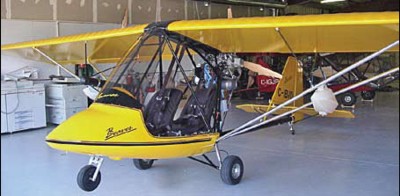 Luckily, Brent and Paulette Holomis,
the owners of ASAP, stepped in
to fill this void. Having already saved
the Chinook ultralight following the
closing of Birdman Enterprises, ASAP
was in position to help. Brent explains,
"Because the Chinook Plus 2 is
similar in construction to the Beaver,
we were approached by some Beaver
dealers and customers to see if we
could somehow provide them with
parts for their existing aircraft."
The company did more than just
take over these disappearing designs.
Thanks to focus and a related machine
shop business, ASAP was able
to make improvements on both airplanes.
Today, both Chinook and the
Beaver have the suffix Plus added to
them to denote the additional design
work done.
Luckily, Brent and Paulette Holomis,
the owners of ASAP, stepped in
to fill this void. Having already saved
the Chinook ultralight following the
closing of Birdman Enterprises, ASAP
was in position to help. Brent explains,
"Because the Chinook Plus 2 is
similar in construction to the Beaver,
we were approached by some Beaver
dealers and customers to see if we
could somehow provide them with
parts for their existing aircraft."
The company did more than just
take over these disappearing designs.
Thanks to focus and a related machine
shop business, ASAP was able
to make improvements on both airplanes.
Today, both Chinook and the
Beaver have the suffix Plus added to
them to denote the additional design
work done.
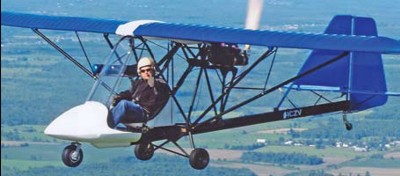 ASAP's array of computer-controlled
machines allows the company
to build parts in-house when many
other manufacturers must go outside
to obtain similar quality hardware.
Those who compare ASAP to Quicksilver
Aircraft, which also has significant
machining capability, are close
to the mark.
ASAP operates out of two locations.
The company manufactures
all parts and components for both
Chinooks and Beavers at its headquarters
in St. Paul, Alberta, Canada.
Another location, in Vernon,
British Columbia, handles all airplane
inquiries and processes part
orders. Technical support and new
product testing is also conducted
in Vernon.
ASAP's array of computer-controlled
machines allows the company
to build parts in-house when many
other manufacturers must go outside
to obtain similar quality hardware.
Those who compare ASAP to Quicksilver
Aircraft, which also has significant
machining capability, are close
to the mark.
ASAP operates out of two locations.
The company manufactures
all parts and components for both
Chinooks and Beavers at its headquarters
in St. Paul, Alberta, Canada.
Another location, in Vernon,
British Columbia, handles all airplane
inquiries and processes part
orders. Technical support and new
product testing is also conducted
in Vernon.
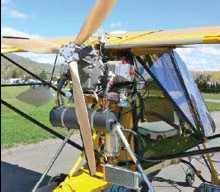 ASAP also has four corporate divisions:
Steel Breeze Powered Parachutes
(www.SteelBreeze.ca), UL Parts
(www.ULParts.com), PPC Canopies
(www.PPCCanopies.com), and Summit
Powered Parachutes (www.Summit-
PPC.com).
The Chinook
Before being rescued by ASAP, some
700 Chinooks had been manufactured
by Birdman Enterprises,
which did a great job of originating
this machine. Canadians in particular,
and ultralight enthusiasts all
over the world, celebrated ASAP's
support of this unique light aircraft
when the company took over the
design in 1988, and reintroduced
the design in 1989.
Though the Chinook's wide cockpit
gives it a pudgy appearance from
some vantage points, the design slips
through the air quite well. It has
light and powerful ailerons, which
makes it easy to guide through the
air. In general, the plane's handling
is quite pleasant despite, or perhaps
because of, its unorthodox shape.
ASAP also has four corporate divisions:
Steel Breeze Powered Parachutes
(www.SteelBreeze.ca), UL Parts
(www.ULParts.com), PPC Canopies
(www.PPCCanopies.com), and Summit
Powered Parachutes (www.Summit-
PPC.com).
The Chinook
Before being rescued by ASAP, some
700 Chinooks had been manufactured
by Birdman Enterprises,
which did a great job of originating
this machine. Canadians in particular,
and ultralight enthusiasts all
over the world, celebrated ASAP's
support of this unique light aircraft
when the company took over the
design in 1988, and reintroduced
the design in 1989.
Though the Chinook's wide cockpit
gives it a pudgy appearance from
some vantage points, the design slips
through the air quite well. It has
light and powerful ailerons, which
makes it easy to guide through the
air. In general, the plane's handling
is quite pleasant despite, or perhaps
because of, its unorthodox shape.
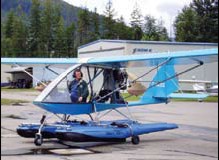 The Chinook was not always fully
enclosed; ASAP added a full Lexan enclosure
for the Chinook Plus, making
a virtual greenhouse surrounding the
pilot and passenger with many square
feet of clear plastic offering an unlimited
view. Even in colder northern climates,
that enclosure provides a reasonably
comfortable environment.
Entering a Chinook means lifting
yourself over about 6 inches of structure,
which could prove a bit challenging
for less flexible aviators, but
once you swing into position you'll
love the roominess. Even with a rearseat
passenger's feet on rudder pedals
right alongside your seat, space is
plentiful. If you have some extra girth
yourself, the Chinook Plus might accommodate
you more comfortably
than some other designs.
ASAP offers the Chinook with the
Rotax 503 or 582 engines, the HKS
700E, or the more powerful Rotax 912.
The Beaver
The Chinook was not always fully
enclosed; ASAP added a full Lexan enclosure
for the Chinook Plus, making
a virtual greenhouse surrounding the
pilot and passenger with many square
feet of clear plastic offering an unlimited
view. Even in colder northern climates,
that enclosure provides a reasonably
comfortable environment.
Entering a Chinook means lifting
yourself over about 6 inches of structure,
which could prove a bit challenging
for less flexible aviators, but
once you swing into position you'll
love the roominess. Even with a rearseat
passenger's feet on rudder pedals
right alongside your seat, space is
plentiful. If you have some extra girth
yourself, the Chinook Plus might accommodate
you more comfortably
than some other designs.
ASAP offers the Chinook with the
Rotax 503 or 582 engines, the HKS
700E, or the more powerful Rotax 912.
The Beaver
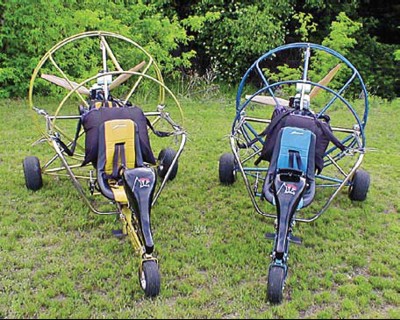 As it had done with the Chinook,
ASAP added value to the Beaver
RX550 by finishing the wing in conventional
dope and fabric (Ceconite),
rather than the original pre-sewn Dacron
envelopes. Using Ceconite increases
manufacturing time and adds
quite a few pounds (with paint), but
it lasts much longer, especially when
an aircraft is stored outside. With the
conversion to the Ceconite wing covering
also came a change in rib spacing
from 18 or 20 inches apart to 6
inches apart, which allows the wing
to hold its airfoil shape better and improves
performance slightly.
As it had done with the Chinook,
ASAP added value to the Beaver
RX550 by finishing the wing in conventional
dope and fabric (Ceconite),
rather than the original pre-sewn Dacron
envelopes. Using Ceconite increases
manufacturing time and adds
quite a few pounds (with paint), but
it lasts much longer, especially when
an aircraft is stored outside. With the
conversion to the Ceconite wing covering
also came a change in rib spacing
from 18 or 20 inches apart to 6
inches apart, which allows the wing
to hold its airfoil shape better and improves
performance slightly.
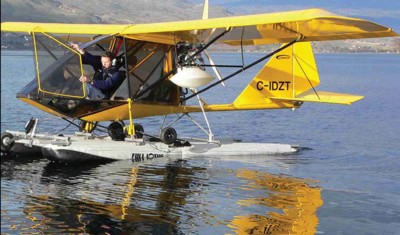 ASAP also increased sleeving in the
leading edge and replaced cable bracing
with tubing. Subsequent to these
changes, the design was subjected to
full static loading, with independent
analysis offered by a local university.
As proof of the design's longevity,
Brent reports that one Beaver RX550
has accumulated more than 2,000
hours while on duty in South Africa.
Those who own older RX550s may
purchase a conversion kit to upgrade
the earlier models.
Build time for the RX550 kit is estimated
by ASAP as 150 to 180 hours.
The builder simply assembles the kit,
no component fabrication is necessary,
and part accuracy is good-
thanks to the company's computercontrolled
machining.
ASAP also supports a wide selection
of engines for the RX550. Builders can
choose a Rotax 582 or 912, but ASAP
also works closely with HPower Ltd.,
in fitting the HKS 700E four-stroke
engine on the Beaver airframe.
The control system of the Beaver
RX550 Plus is quite conventional, using
pushrods to control ailerons, and
cables to effect rudder movements. It
has full-span ailerons, which Brent
says improves the handling significantly
on the RX550 Plus over the
original version. The RX550 Plus does
not have flaps, flaperons, or other
glide path control devices, though
ASAP indicated these devices might
be added in the future. Nor does it
have trim; however, an inventive kit
builder could create a trim system.
The Beaver RX550 Plus does have
the ultralight-like nose cone and
windscreen, but it opens to the sides,
giving open-air enthusiasts a machine
they'll enjoy.
A Single-Seater
Both the Chinook Plus and RX550
Plus are two-place machines. With
the ultralight exemption in the United
States expiring on January 31,
American owners of these two-place
machines will need to convert their
aircraft to experimental light-sport
aircraft (E-LSA) or experimental amateur-
built status to remain legal, while
our Canadian friends may continue
to fly these machines under Canada's
ultralight regulations.
ASAP has now introduced a singleseat
version of the Beaver. This recent
offering brings a pleasantly light
version of the former RX35 model
powered by a 40-hp Rotax 447 for
$17,500. At a typical empty weight
of 340 pounds, the Beaver SS doesn't
qualify as a Part 103 ultralight here
in the United States, but it does meet
Canada's rules and offers 300 pounds
of useful load. Americans who relish
single-seat aircraft could build this
machine as an amateur-built aircraft
and fly it as a sport pilot.
ASAP also increased sleeving in the
leading edge and replaced cable bracing
with tubing. Subsequent to these
changes, the design was subjected to
full static loading, with independent
analysis offered by a local university.
As proof of the design's longevity,
Brent reports that one Beaver RX550
has accumulated more than 2,000
hours while on duty in South Africa.
Those who own older RX550s may
purchase a conversion kit to upgrade
the earlier models.
Build time for the RX550 kit is estimated
by ASAP as 150 to 180 hours.
The builder simply assembles the kit,
no component fabrication is necessary,
and part accuracy is good-
thanks to the company's computercontrolled
machining.
ASAP also supports a wide selection
of engines for the RX550. Builders can
choose a Rotax 582 or 912, but ASAP
also works closely with HPower Ltd.,
in fitting the HKS 700E four-stroke
engine on the Beaver airframe.
The control system of the Beaver
RX550 Plus is quite conventional, using
pushrods to control ailerons, and
cables to effect rudder movements. It
has full-span ailerons, which Brent
says improves the handling significantly
on the RX550 Plus over the
original version. The RX550 Plus does
not have flaps, flaperons, or other
glide path control devices, though
ASAP indicated these devices might
be added in the future. Nor does it
have trim; however, an inventive kit
builder could create a trim system.
The Beaver RX550 Plus does have
the ultralight-like nose cone and
windscreen, but it opens to the sides,
giving open-air enthusiasts a machine
they'll enjoy.
A Single-Seater
Both the Chinook Plus and RX550
Plus are two-place machines. With
the ultralight exemption in the United
States expiring on January 31,
American owners of these two-place
machines will need to convert their
aircraft to experimental light-sport
aircraft (E-LSA) or experimental amateur-
built status to remain legal, while
our Canadian friends may continue
to fly these machines under Canada's
ultralight regulations.
ASAP has now introduced a singleseat
version of the Beaver. This recent
offering brings a pleasantly light
version of the former RX35 model
powered by a 40-hp Rotax 447 for
$17,500. At a typical empty weight
of 340 pounds, the Beaver SS doesn't
qualify as a Part 103 ultralight here
in the United States, but it does meet
Canada's rules and offers 300 pounds
of useful load. Americans who relish
single-seat aircraft could build this
machine as an amateur-built aircraft
and fly it as a sport pilot.